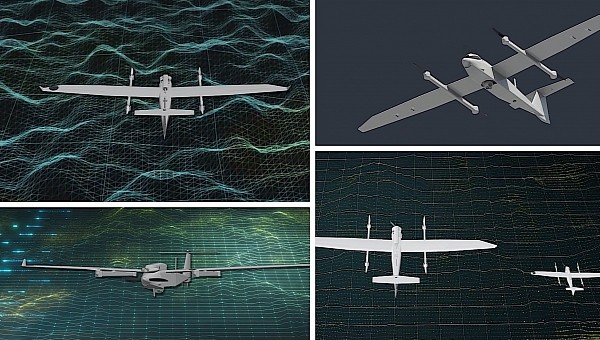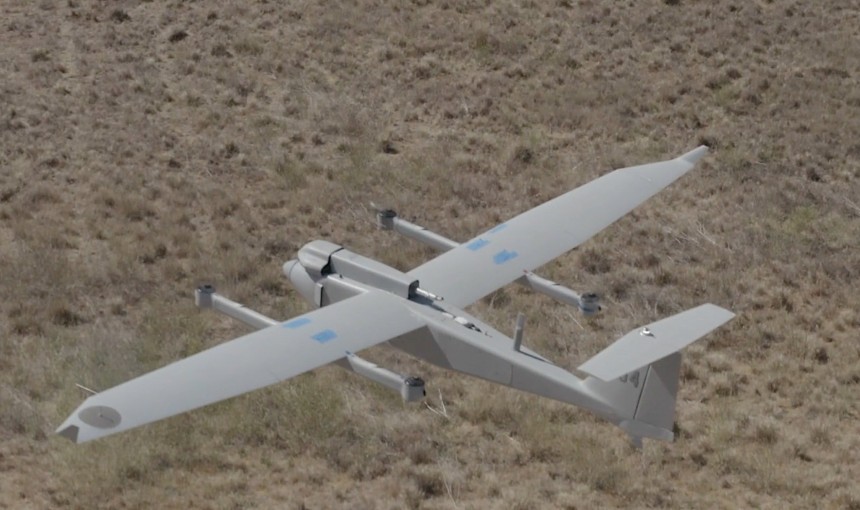Pretty much everyone with an interest in military operations must have thought drones would change the face of warfare as soon as they arrived on the scene. They were all, of course, right, but it wasn’t until the war in Ukraine that it became obvious to exactly what extent.
Drones have proven invaluable for the two opposing sides involved in the conflict. They obviously come in a lot of shapes and sizes and are being used for a variety of purposes. But of them all, one group stands out the most: the small, battlefield drones used to perform anything from reconnaissance missions to target acquisition.
A standard-issue piece of equipment for several years now, the battlefield drone is getting increasingly important for the American Army, especially in the wake of events unfolding over in Ukraine. But the ones currently in operation, like the RQ-7B Shadow introduced in 2002 and used by Brigade Combat Teams (BCTs), are getting old, and new, improved ones are needed.
To look for a replacement, the U.S. Army launched back in 2021 a competition for contractors called Future Tactical Unmanned Aircraft System (FTUAS). As per the requirements of the program, the new drones need to be able to operate with no need for a runway for departure and arrival, and to be very quiet, among other things.
With just two years left until the Army is expected to field the new drones, the names of the companies competing for the contract have been announced. And with them, some of the drones that might make it into soldiers’ hands not long from now.
One of them is the Jump 20, a contraption made by defense contractor AeroVironment. Unlike the Shadow, which usually launches from a vehicle-mounted catapult and needs arresting gear for recovery, the Jump is a VTOL, meaning it needs little in the way of logistics for operation purposes.
Designed as a fixed-wing aircraft, it can stay airborne for up to 14 hours, and travel as far as 115 miles (185 km) from the point of departure – that’s the farthest it can go and still be in contact with its operators, but handoff is possible if some other command station is carefully placed along the way.
AeroVironment claims the Jump can be ready for a mission in an hour, the time needed for soldiers to configure the drone for whatever task they have it perform. Depending on the mission, it can be loaded with a variety of tools and gear, as long as they don’t weigh more than 30 pounds (14 kg).
AeroVironment is one of five companies selected for this stage of the FTUAS program, with the others being Griffon Aerospace, Northrop Grumman, Sierra Nevada, and Textron. The list will, of course, be trimmed down as the program moves forward, with a winner expected to be announced sometime in 2025.
A standard-issue piece of equipment for several years now, the battlefield drone is getting increasingly important for the American Army, especially in the wake of events unfolding over in Ukraine. But the ones currently in operation, like the RQ-7B Shadow introduced in 2002 and used by Brigade Combat Teams (BCTs), are getting old, and new, improved ones are needed.
To look for a replacement, the U.S. Army launched back in 2021 a competition for contractors called Future Tactical Unmanned Aircraft System (FTUAS). As per the requirements of the program, the new drones need to be able to operate with no need for a runway for departure and arrival, and to be very quiet, among other things.
With just two years left until the Army is expected to field the new drones, the names of the companies competing for the contract have been announced. And with them, some of the drones that might make it into soldiers’ hands not long from now.
Designed as a fixed-wing aircraft, it can stay airborne for up to 14 hours, and travel as far as 115 miles (185 km) from the point of departure – that’s the farthest it can go and still be in contact with its operators, but handoff is possible if some other command station is carefully placed along the way.
AeroVironment claims the Jump can be ready for a mission in an hour, the time needed for soldiers to configure the drone for whatever task they have it perform. Depending on the mission, it can be loaded with a variety of tools and gear, as long as they don’t weigh more than 30 pounds (14 kg).
AeroVironment is one of five companies selected for this stage of the FTUAS program, with the others being Griffon Aerospace, Northrop Grumman, Sierra Nevada, and Textron. The list will, of course, be trimmed down as the program moves forward, with a winner expected to be announced sometime in 2025.











